Getting Around Kathmandu Cheaply
By Barbara Law
Taxi from airport: 700 rupees (approximately US$13). Taxi to Boudhanath: 350 rupees. It all adds up and starts to eat into your travel budget. Why not take the local transportation? If you’re adventurous enough to try tuk-tuks and micros, they’re easy, fun, and cheap. Once you get the hang of it your wallet will thank you.
Here’s how:
Learn numbers. Devanagari is more straightforward than it looks. The number 14 (Patan Durbar, Monkey Temple, Jawalakhel Zoo) looks like a 98, 5 (U.S. Embassy, Lazimpat) like a Y with a curl. A 2 (Boudhanath) is a 2.
Orient yourself. Kathmandu is laid out in a reasonably uncomplicated way. Ratna Park, in the center of the city, is the hub from which most tuk-tuks and micros depart. Sundhara, on the park’s west perimeter, has signs posted with numbers and destinations. Work out on your map where you want to go.
Ask. Nepalis are nice. They’ll steer you in the right direction.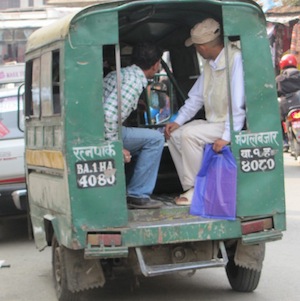 Flag the vehicle down anywhere along the road. It’ll stop. Tell the driver or conductor where you want to go.
Flag the vehicle down anywhere along the road. It’ll stop. Tell the driver or conductor where you want to go.
Settle in for the duration. If you’re in a hurry, tuk-tuks are not your preferred choice. They whine up and down the street at the speed of an average trot.
Watch for your stop. Bang on the ceiling when you want to get out.
Pay. Reach in the front window and hand the driver your money. If you’re not sure, give a larger bill. Drivers don’t cheat.
Repeat.
Even if you get on the wrong bus and end up somewhere you didn’t plan on, you’ve gotten a more intimate view of this fascinating city than you would from the back of a speeding cab.
If you would like to purchase this article for your publication, please click here to contact the author directly.
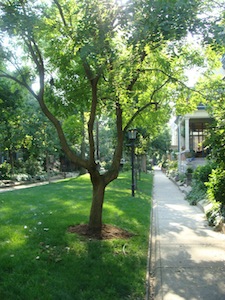 For a split second you may wonder if you've stepped back in time when ambling through the heart of historic Old Louisville in Louisville, Kentucky. Massive Victorian mansions flood the 48 city blocks, obscuring your view of anything but grand estates. Majestic leafy arches frame tree-lined streets, eclipsing the sky and sheltering passersby. The splendor of this neighborhood lures tourists from far ends of the country to see the exciting potpourri of architectural styles and greenery.
For a split second you may wonder if you've stepped back in time when ambling through the heart of historic Old Louisville in Louisville, Kentucky. Massive Victorian mansions flood the 48 city blocks, obscuring your view of anything but grand estates. Majestic leafy arches frame tree-lined streets, eclipsing the sky and sheltering passersby. The splendor of this neighborhood lures tourists from far ends of the country to see the exciting potpourri of architectural styles and greenery. 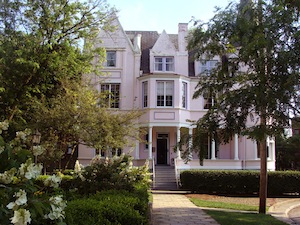 After reaching the Pink Palace, you stumble upon the nearly hidden Belgravia Court, named for its London, England ancestor. What’s truly unique about the court is its flower-dotted walkway. The pedestrian-only street gives Belgravia a private, tranquil feel. Tourists will be surprised by the stillness of this urban paradise where neighborhood cats laze sleepily about, occasionally approaching strangers for companionship. This architectural marvel is the stuff of storybooks with its arched stairways, heavily ornamented doors, and balconies reminiscent of Romeo and Juliet.
After reaching the Pink Palace, you stumble upon the nearly hidden Belgravia Court, named for its London, England ancestor. What’s truly unique about the court is its flower-dotted walkway. The pedestrian-only street gives Belgravia a private, tranquil feel. Tourists will be surprised by the stillness of this urban paradise where neighborhood cats laze sleepily about, occasionally approaching strangers for companionship. This architectural marvel is the stuff of storybooks with its arched stairways, heavily ornamented doors, and balconies reminiscent of Romeo and Juliet. 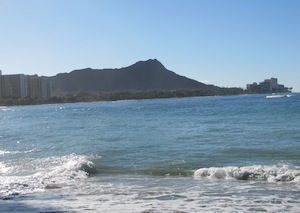 Paddleboarding has become a great alternative to surfing for people visiting Waikiki. For years, locals and veteran tourists alike have encouraged friends to learn to surf in these waters because the waves are smaller and they can be ridden for a longer time. The same is true for paddleboarding. The Hawaiian word for paddleboarding is ku hoe he’e nalu which literally means to stand, to paddle, to surf, a wave. And these calmer waters of Waikiki are the perfect place to stand, paddle, and surf the waves, all of which can be done for as little as $25.
Paddleboarding has become a great alternative to surfing for people visiting Waikiki. For years, locals and veteran tourists alike have encouraged friends to learn to surf in these waters because the waves are smaller and they can be ridden for a longer time. The same is true for paddleboarding. The Hawaiian word for paddleboarding is ku hoe he’e nalu which literally means to stand, to paddle, to surf, a wave. And these calmer waters of Waikiki are the perfect place to stand, paddle, and surf the waves, all of which can be done for as little as $25. 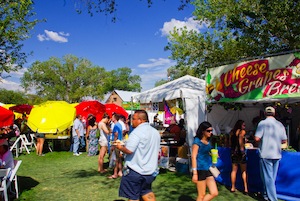 The festival draws aficionados from all over the country. I caught up with two “wine fairies” from Oklahoma, Glenda and Tina, roaming the grounds sprinkling their fairy dust -- purple glitter -- on unsuspecting revelers. (Even I was covertly anointed.) This was their seventh annual expedition to the wine festival, and for them, it is a “no miss, must attend” event.
The festival draws aficionados from all over the country. I caught up with two “wine fairies” from Oklahoma, Glenda and Tina, roaming the grounds sprinkling their fairy dust -- purple glitter -- on unsuspecting revelers. (Even I was covertly anointed.) This was their seventh annual expedition to the wine festival, and for them, it is a “no miss, must attend” event.